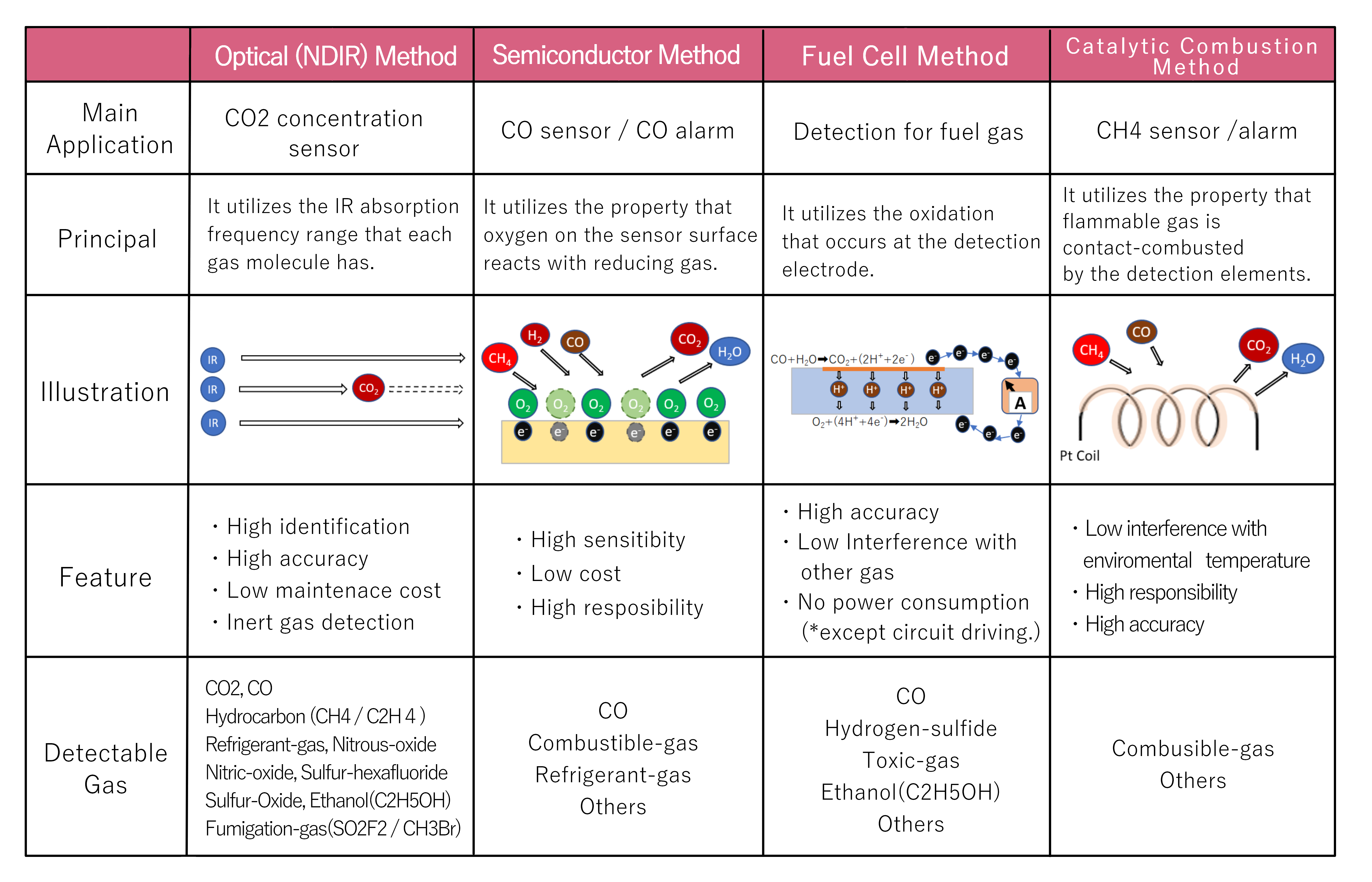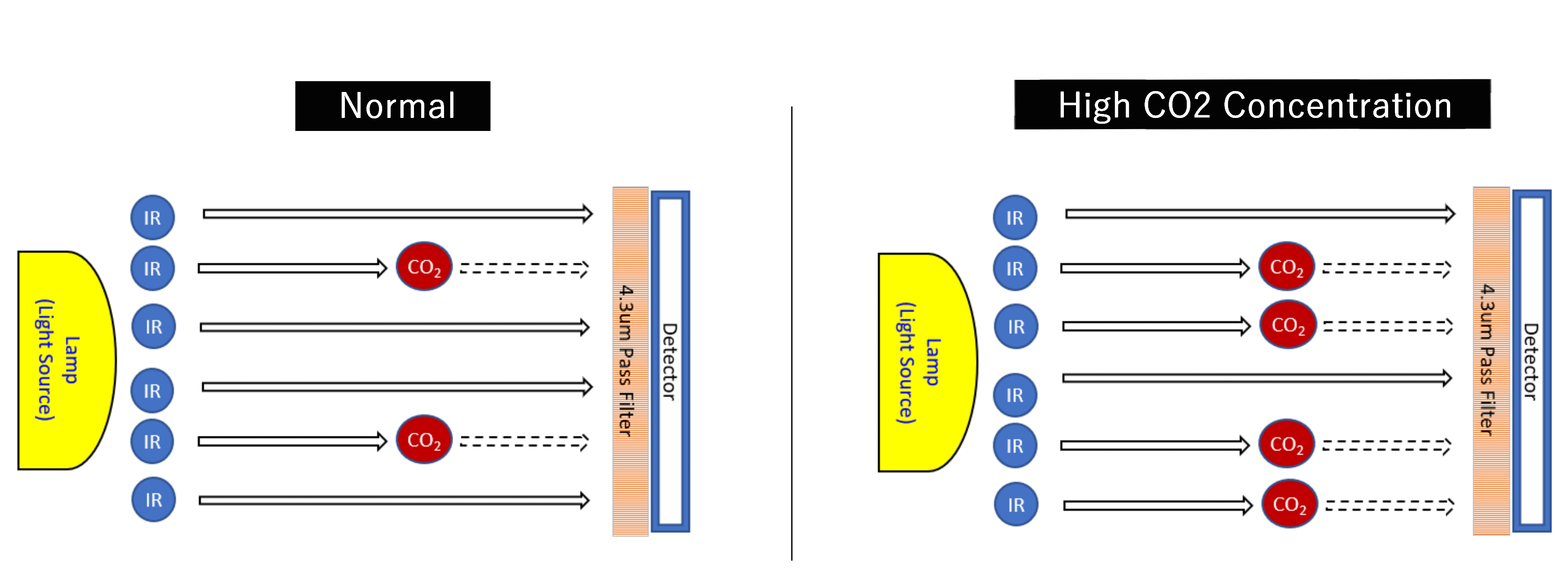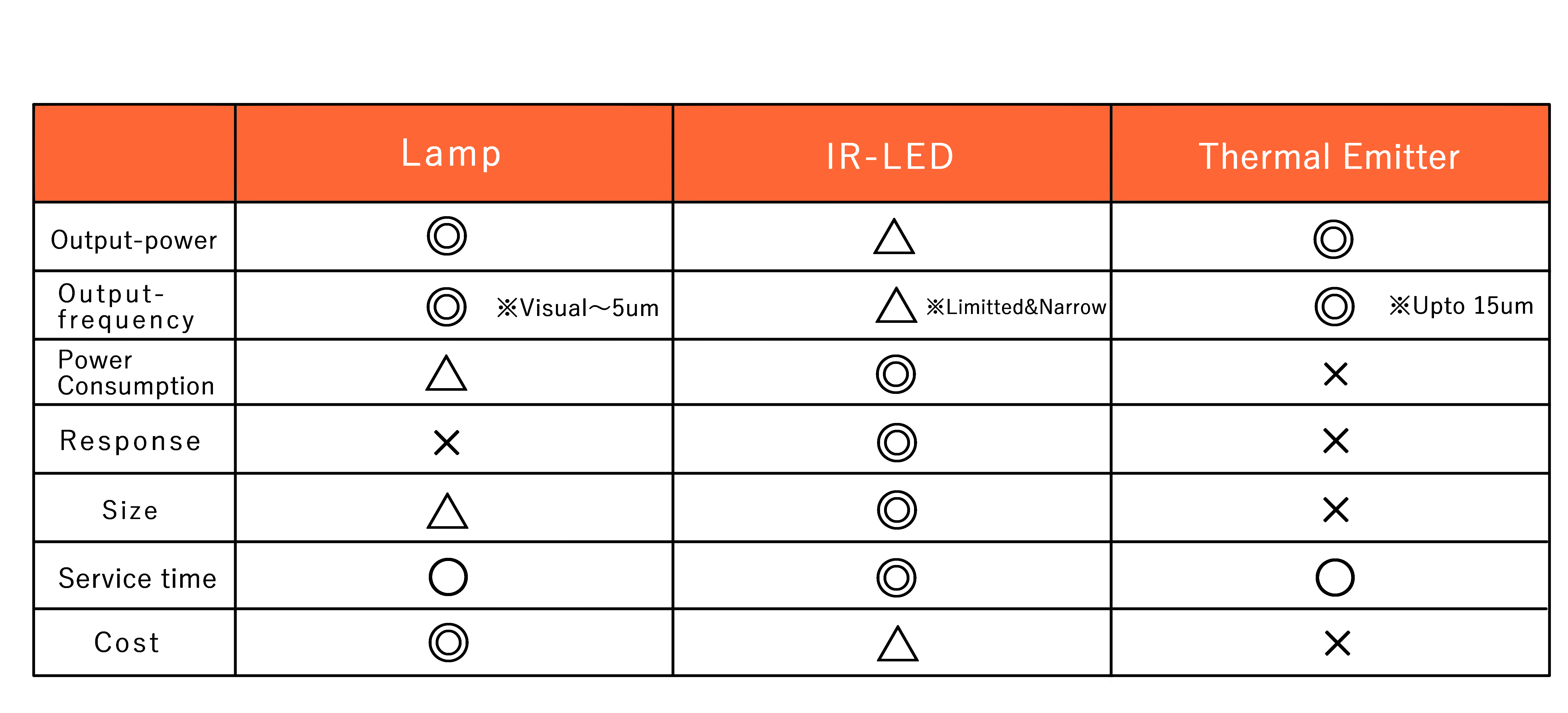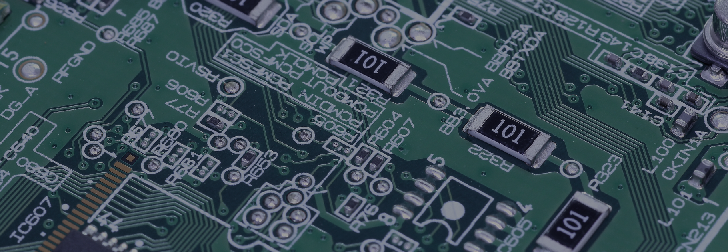Gas Sensor
Since its foundation in 1931, Oshino Lamps Limited has specialized in the manufacturing of Sub-Miniature Lamps. As you know, a lamp is a lighting device that illuminates a dark place, but a lamp also emits InfraRed-Ray(IR). Recently, this IR which is emitted from a lamp is utilized as an IR light source for "optical (NDIR) gas sensors".
(*NDIR: Non-Dispersive InfraRed)
On this page, we would like to introduce Gas-sensors, especially optical (NDIR) gas-sensor, to get a better understanding of lamps for IR light sources.
Topics in this page are;
① 4 Major Gas Sensors' brief.
② Optical (NDIR) gas sensor
③ Components of Optical(NDIR)gas sensor
④ Comparison table of IR light sources
It would be highly appreciated if you fully understand lamp features and this information is helpful for your new gas sensor development.
① 4 Major Gas Sensors' brief
There are a lot of detecting methods for gas leakage or concentration.
The following is a brief introduction to 4-types of gas sensors that are very popular now.

② Optical (NDIR) gas sensor
The optical (NDIR) gas sensor utilizes the property of IR absorption frequency range which each gas has. NDIR gas sensor has a high gas identification and can detect chemically stable gas (CO2, etc.).
e.g.) IR absorption frequency range . . . CO2: 4.3um, CO: 4.6um, CH4: 3.3um, R32(refrigerant gas): 3.3um, etc.
Principle of gas concentration measurement:
The gas concentration is calculated by measuring IR reducing amount.
e.g.) CO2 measurement

* When CO2 concentration is high (comparing with normal status), 4.3um's IR amount which reaches the detector is reduced.
③ Components of Optical (NDIR) gas sensor
A typical optical (NDIR) gas sensor consists of 4 parts: IR light source that emits infrared rays, IR sensor that detects infrared rays, Optical filter that transmits only the absorption frequency range of the target gas, and Gas cell that houses these parts.

Within these 4 parts, very important parts are "IR light source" and "IR sensor", because these 2parts directly affect the performance of the sensor. Moreover, IR light source and IR sensor are physically classified into two types, ”thermal type" and "photon type".
1) IR Light Source
*Thermal Type: IR output comes from a high temperature object.
1) Lamp:
A lamp is a very popular device that everybody is well-known as an illumination device, but it is also famous as IR light source for NDIR gas sensors.
By applying an electric voltage to a lamp and heating the filament to a high temperature, a lamp emits not only a visible light range but also a Near~Mid-wavelength IR range. Additionally, a lamp is a very popular and easy-to-get device. This is the reason why a lamp is the most popular lR-light source for CO2 sensors which are available in the market.
2) Thermal Emitter:
By applying an electric voltage to the resistance heating element and heating it to a high temperature, it emits visible light range and Near/Mid/Long-wavelength IR range. To get the light source of MWIR or LWIR efficiently, special materials, Sapphire, CaF2, or BaF2, are used for the transmission window.
*Photon Type: IR output released by re-combining with electrons and electron-holes
3) IR-LED:
IR is emitted when electrons recombine with electron holes in a diode.
Since it is unnecessary to heat the material, it has some excellent characteristics, such as low power consumption and quick response. But output power is small and the output frequency range is narrow so that there are some limitations for use.
2) IR Sensor:
*Thermal Type: A sensor that detects the temperature rise generated by absorbing IR.
1) Thermopile Sensor:
The thermopile sensor utilizes the Seebeck effect.
"Seebeck effect" is a phenomenon in which voltage is observed by applying a temperature difference to two junctions of two dissimilar materials. IR is measured by detecting this voltage.
2) Pyroelectric Sensor:
The pyroelectric sensor utilizes the Pyroelectric effect.
"Pyroelectric effect" is a phenomenon in which the polarization of the pyroelectric body changes due to temperature changes.
When the pyroelectric body absorbs IR, its temperature rises and the polarization decreases. As the floating electric charges on the pyroelectric body do not disperse immediately, the pyroelectric body is temporarily charged. IR is measured by detecting this electric charge.
*Photon Type: A sensor that generates the electric current when photons are absorbed in the sensor area.
3) Photo-Diode:
A photo-diode is a semiconductor p–n junction device that converts light into an electrical current. The current is generated when photons are absorbed in the photo-diode.
Since it detects light, the response speed is fast. It also has high sensitivity and high detected accuracy.
④ Comparison of IR light sources



























![株式会社押野電気製作所 [本社] 〒140-0011 東京都品川区東大井 5−12−10 大井朝陽ビル4階TEL:03-3471-8548(代)](/wp-content/themes/oshino/images/common/footer-about-en.svg?20211228)
